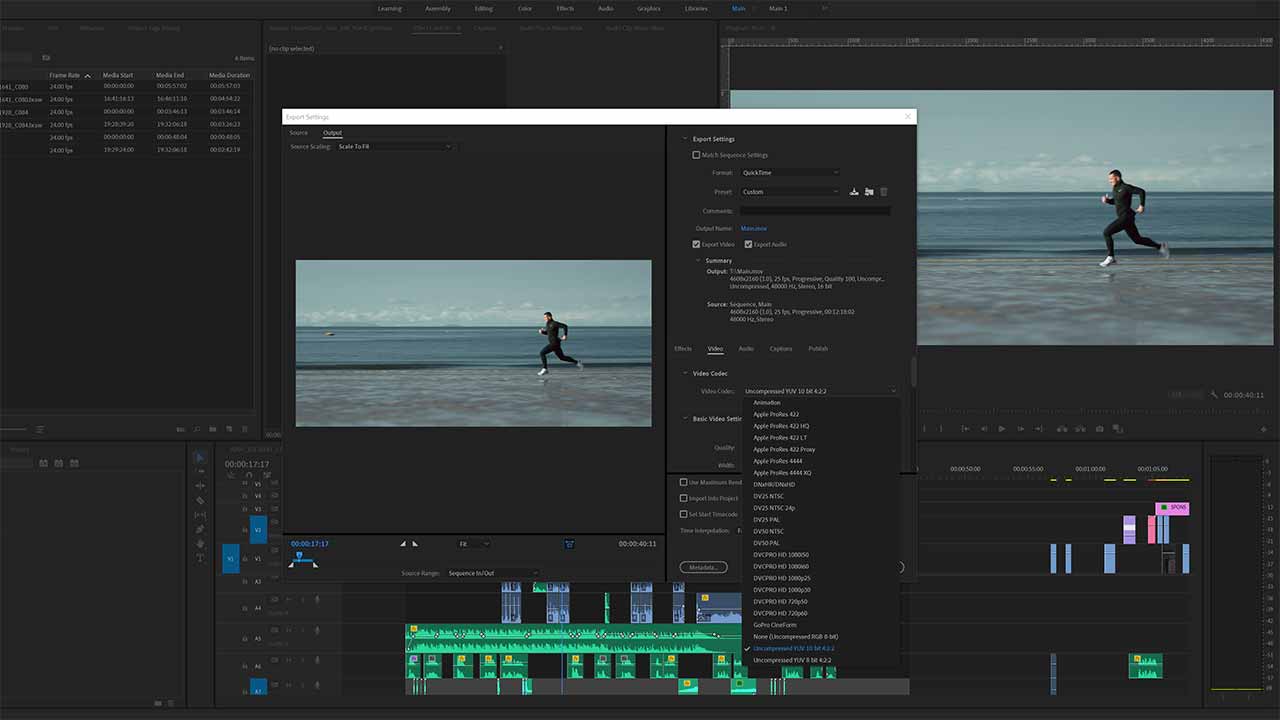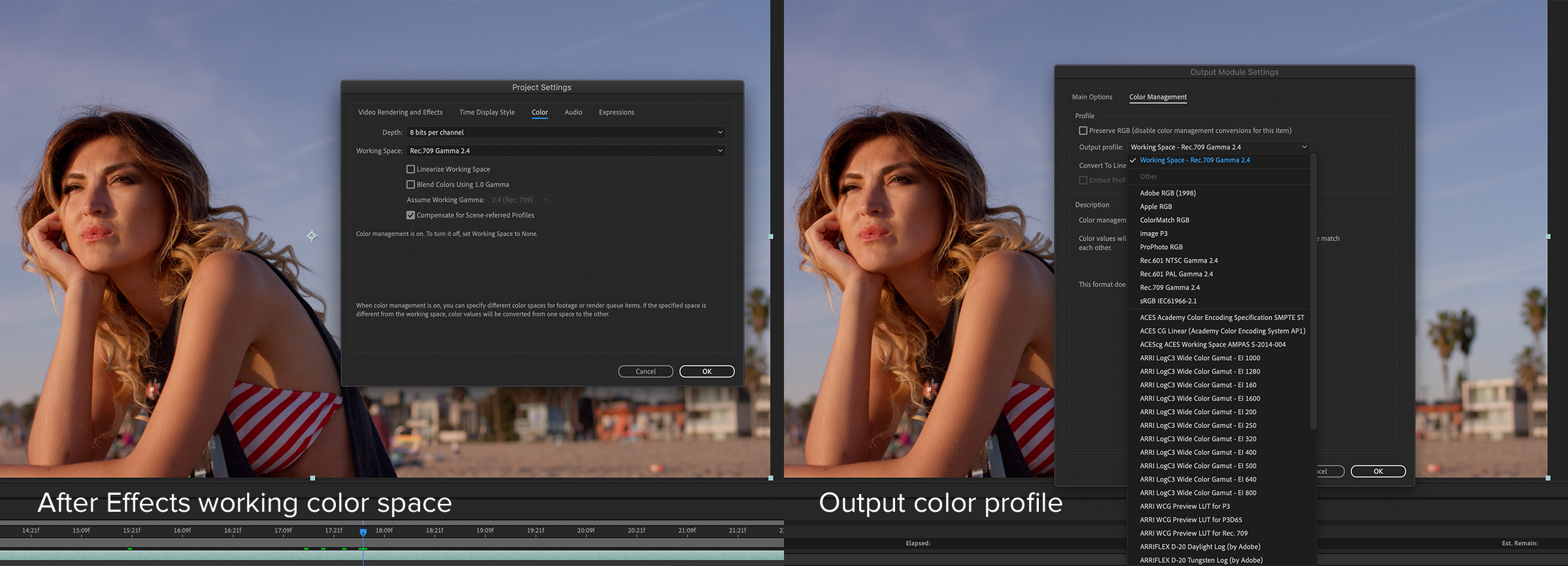
If you pick a clip that has an extreme exposure when compared to the other footage you got on the day, you may not be able to adjust those clips to match one another, thus eliminating options from your cut. That way, you can try to match everything to a place that is, at the very least, able to be achieved with all of your footage. The best way to attain visual consistency across a bunch of footage is to look at your clips and to find one that has average exposure and levels when compared to the rest of your footage. Unless your footage was shot in a way that the tint helps, chances are you should avoid it altogether. You just want to get as close to true white as you can so that each step works correctly. Your camera should have been white balanced before hand, but there are some picture profiles that slightly push the color temperature one way or another, so you’ll want to rebalance regardless.ĭon’t apply any tint at this point.
#Premiere pro change color space manual
709 LUT? Check out this video for a quick primer.Īpplying a LUT is also an opportunity to white balance your footage, either via the Auto White Balance or manual temperature adjustments. What's the difference between a Log LUT and a Rec. 709 LUT will make your color correction sliders, curves, and scopes all work the way they should so that you can get the most out of your creative LUTs later on. You output LUT (if you choose to apply one) is intended to achieve a cinematic look, or sometimes a "film" look. This means that we intend to send our footage through this predetermined adjustment so that we may accurately adjust colors during our correction and grade phase, but …

Apply your input LUTThe LUT (which stands for look up table) that you apply in this case will shift the colors in your footage to the standard values of HD broadcast television, and we referred to it as an "Input LUT." Let’s get into the micro-steps of color correction.ġ. Think how easy it would be to color the art at the museum if it was flat, desaturated, and had less contrast. It also helps you to squeeze out some extra information in between your maximum and minimum values. If your color profile is flat, desaturated, and has less contrast, it will allow these additions to have a more positive outcome, and give you a bit more control when coloring your footage. You can designate a shape to isolate its colors. These work a lot like masks in Adobe Photoshop. In the DaVinci program, color masks are called Power Windows. You can also use color qualifiers to identify colors that you want to fix in place so that they won't change when you adjust other colors and elements in the picture. Color QualifiersĬolor qualifiers give you the chance to change a particular color, or range of colors, without changing the rest of the picture. You can set numerical values, or use the control drag point to set your value based on hue. The three-way color corrector lets you balance the shadows, midtones, and highlights of an image using color wheels.
#Premiere pro change color space professional
Three-way color correctors are a useful tool for many colorists in professional entertainment, but they have their pros and cons.

Often, you could just copy and paste the effects from your previous clip onto an adjustment layer, or through the use of bins, but if your footage has lighting and exposure discrepancies, it may not work very well. The best way to use color match is after you’ve color corrected some footage and now need to apply those same corrections to a target clip. If you do, it will completely throw off the value of your colors and ultimately make your life a lot harder than it needs to be. This is fine for your color grade, but don’t do this to color correct. Some people even like to use popular film clips as their reference image, and their own personal footage as the target image. This is an automatic calculation, so it is important to check your scopes and use your judgement as to the quality of the color match. Color MatchĬolor match allows you to choose a reference image that will then be analyzed and applied to your target image. You can always zoom in and add another drag point to make a small adjustment. This generates gradual changes rather than big extreme changes. And that’s a good thing, because it means the change isn’t isolated, but interconnected.

When you make a curves adjustment, you control the entire color channel shift with any movement of the drag points. With curves, you can add points to drag colors to new values, and change shadows, midtones, and highlights with much more precision. CurvesĬurves are helpful for precise color correction and color grading, and you will want to pair these with your scopes. Scopes are a monitoring tool that show color and light information on a graph so that you can see the precise balance of these characteristics and how they compare to one another. As you can see, scopes are a simple but powerful tool that allow you to properly color correct your footage.


 0 kommentar(er)
0 kommentar(er)
